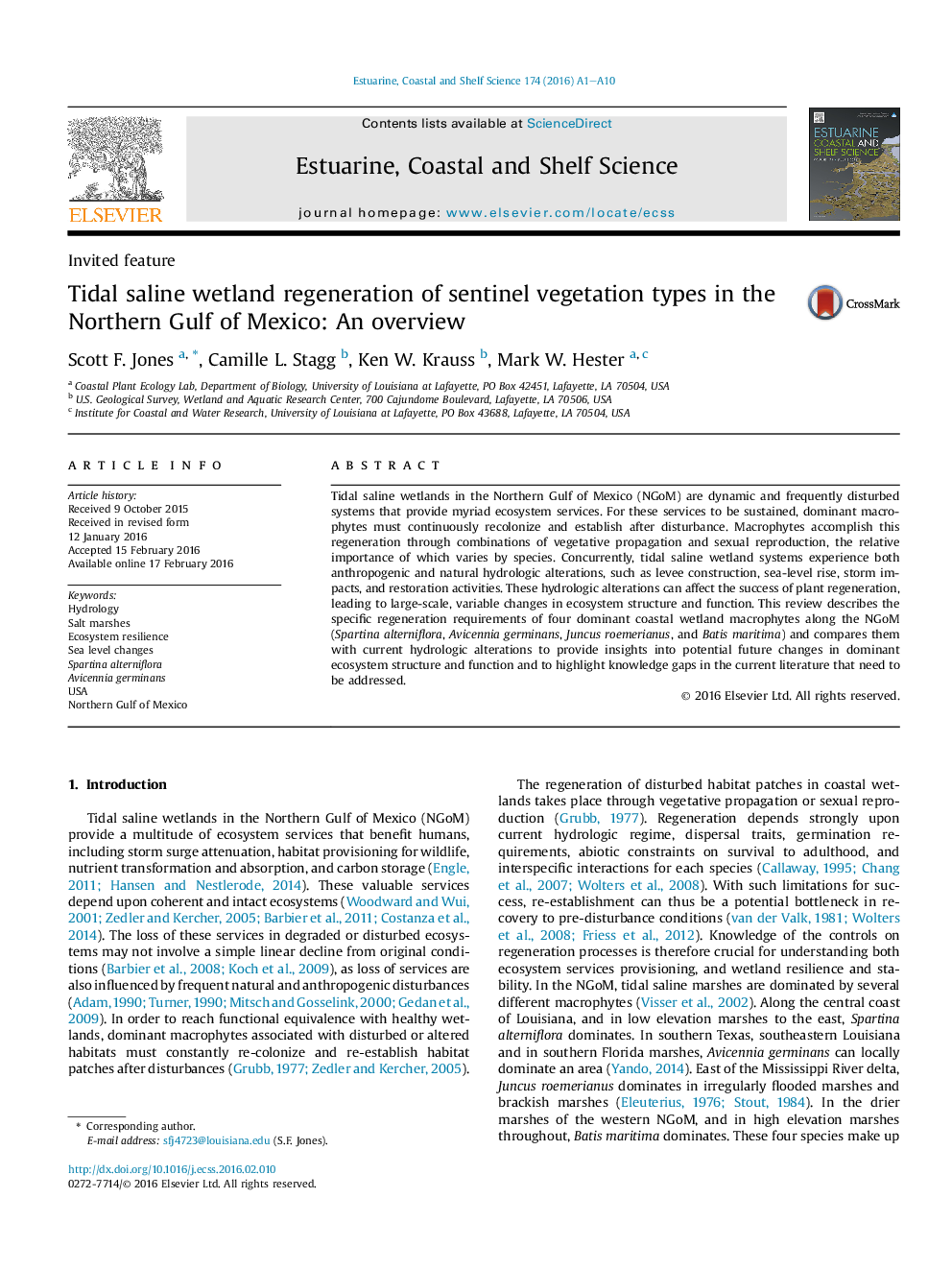| کد مقاله | کد نشریه | سال انتشار | مقاله انگلیسی | نسخه تمام متن |
|---|---|---|---|---|
| 4539294 | 1626625 | 2016 | 10 صفحه PDF | دانلود رایگان |
• We review regeneration requirements of four intertidal wetland species.
• We explore key hydrologic alterations to marshes in the Northern Gulf of Mexico.
• We address knowledge gaps in regeneration response to hydrologic alteration.
• We present a regional template for similar reviews in other areas.
Tidal saline wetlands in the Northern Gulf of Mexico (NGoM) are dynamic and frequently disturbed systems that provide myriad ecosystem services. For these services to be sustained, dominant macrophytes must continuously recolonize and establish after disturbance. Macrophytes accomplish this regeneration through combinations of vegetative propagation and sexual reproduction, the relative importance of which varies by species. Concurrently, tidal saline wetland systems experience both anthropogenic and natural hydrologic alterations, such as levee construction, sea-level rise, storm impacts, and restoration activities. These hydrologic alterations can affect the success of plant regeneration, leading to large-scale, variable changes in ecosystem structure and function. This review describes the specific regeneration requirements of four dominant coastal wetland macrophytes along the NGoM (Spartina alterniflora, Avicennia germinans, Juncus roemerianus, and Batis maritima) and compares them with current hydrologic alterations to provide insights into potential future changes in dominant ecosystem structure and function and to highlight knowledge gaps in the current literature that need to be addressed.
Hurricane image credit: Jeff Schmaltz, MODIS Rapid Response Team, NASA/GSFC. Sediment pipeline image credit: Coastal Protection and Restoration Authority. All other images provided by the Coastal Plant Ecology Lab at the University of Louisiana at Lafayette and by Ken W. Krauss, USGS Wetland and Aquatic Research Center.Figure optionsDownload high-quality image (547 K)Download as PowerPoint slide
Journal: Estuarine, Coastal and Shelf Science - Volume 174, 5 June 2016, Pages A1–A10
